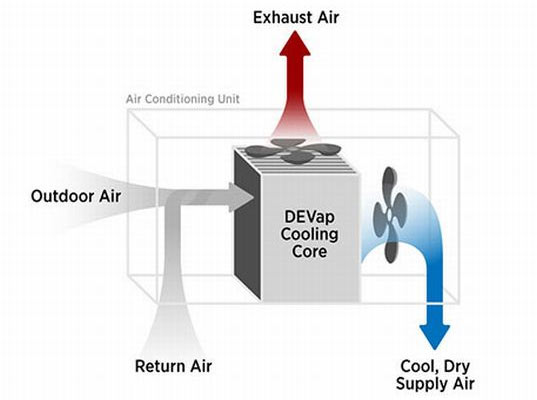Air conditioning units employ chemical substances that conveniently convert from a gas into a liquid and back again. This chemical is used to move heat from the atmosphere within a property to the outdoor atmosphere.
The device has three principal parts: a compressor, a condenser, and an evaporator. The compressor and condenser are typically found on the outside part of the air conditioning unit. The evaporator is found inside the home, often as a component of a heater, which also helps warm the house.
The working liquid enters the pump as a cool, low-pressure gas. The compressor pushes the fluid, packing the particles closer together. The more compact the elements become, the higher the energy levels and temperature. The fluid then exits the pump as a warm, high-pressure gas and flows into the condenser.
If you look at the air conditioning unit outside, you will see metal fins across the condenser. These fins function similarly to a car radiator, helping heat escape or dissipate faster. As the working fluid exits the condenser, its temperature drops, and it changes from a gas to a high-pressure liquid.
The liquid then flows to the evaporator through a small, narrow opening. On the other side, the liquid’s pressure decreases, causing it to expand into a gas. As it evaporates, it absorbs heat from the surrounding air. The evaporator also has metal fins to facilitate heat exchange. By the time the working fluid leaves the evaporator, it has become a cool, low-pressure gas again.
At this point, the gas returns to the compressor to start the cycle again. Connected to the evaporator is a fan that circulates air inside the home, passing it across the evaporator fins. Warm air rises to the top of the room, where it is drawn into the air conditioner and sent through ducts.
The warm air helps cool the gas in the evaporator. As the heat is removed, the cooled air is blown back into the room through ducts, usually at floor level. This process continues until the room reaches the desired temperature.
Once the thermostat detects that the set temperature has been reached, it switches off the air conditioner. As the room gradually warms up again, the thermostat reactivates the system, repeating the cycle.
Don’t let the Sydney heat get you down! Contact Frost Air Conditioning for top-quality Air Conditioning in Sydney solutions and experience the cool comfort you deserve. Book your service today.






